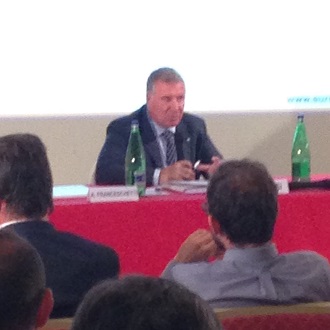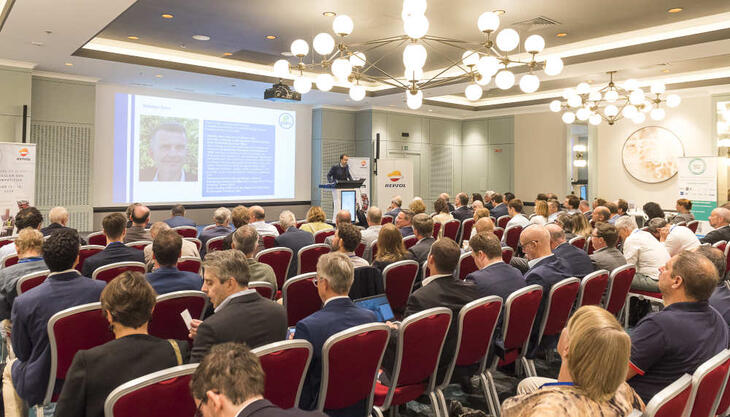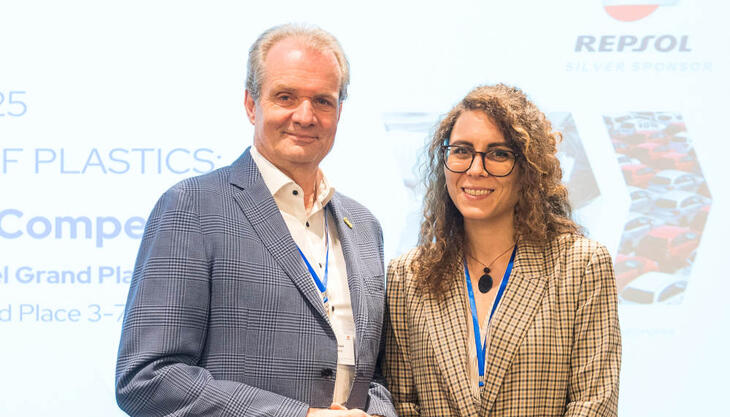Novelties and figures encourage Italian manufacturers
The annual member assembly of Assocomaplast (the Italian trade association belonging to Confindustria, which groups together over 160 makers of machinery, moulds and equipment for plastics and rubber) took place on June 28, 2016 at the Relais Franciacorta in Corte Franca (province of Brescia). During the assembly the new executive committee and board of auditors were elected for the two-year term 2016-2018, and the panel of arbitrators for the four-year term 2016-2020.
As Members of the committee have been elected: Mauro Drappo (Amut), Maria Grazia Colombo (BFM), Gianni Luoni (Elba), Alessandro Balzanelli (FB Balzanelli Avvolgitori), Anthony Caprioli (Macchi), Tiziano Caprara (Negri Bossi), Dario Previero (Previero), Gabriele Caccia (Syncro), Corrado Zanga (Uniloy Milacron). As Members of the board of statutory auditors have been elected: Guglielmo Comerio (Comerio Ercole), Elena Cribiù (Crizaf); as substitute statutory auditor: Sergio Ceriani (Bandera). As arbitrators have been elected: Elisabetta Cirielli (Cibra Nova), Simone Maccagnan (MacGi), Maurizio Toniato (Mobert), Flavio Giordani (Plastiblow), Romeo Varisco (Termostampi).
The
Assembly also met in extraordinary session to approve new articles of
association, revised on the basis of guidelines of the Confindustria reform.
The most significant changes include the shift from three levels of governing
bodies (president and vice-president; board of directors; executive committee)
to two (president assisted by three vice-presidents; board of governors).
The public session followed. Marco Fortis, vice-president of Fondazione Edison and economic advisor to Palazzo Chigi, presented an analysis of the Italian economic scenario with special regard to the plastics and rubber industry. In his speech, Fortis underscored the fact that Italian macroeconomic data are substantially positive: GDP growing for the fifth consecutive quarter to +1% in January-March 2016, consumption by families on the rise, employment figures showing a positive trend, positive exports and balance of trade, and growth in investments in machinery, which is confirmed by a leap of nearly 32 percentage points in the orders of machine tools.
In this context, the plastics and rubber industry exported goods for a record value of 22.6 billion euros in 2015, and in 2014 Italy was world leader in balance of trade for 45 products from the plastics-rubber-machinery-moulds system.
 Another
guest was Corrado Peraboni, managing director of Fiera Milano, who illustrated
the characteristics and potentials of the Innovation Alliance, which includes
the Plast 2018 exposition and the tradeshows Ipack-Ima, Intralogistica Italia,
Print4All and Meat-Tech. This is a wholly unique group of fairs with
significantly amplified international resonance, which will completely fill the
Milan fairgrounds, with visitors able to tour the entire event with a single
ticket.
Another
guest was Corrado Peraboni, managing director of Fiera Milano, who illustrated
the characteristics and potentials of the Innovation Alliance, which includes
the Plast 2018 exposition and the tradeshows Ipack-Ima, Intralogistica Italia,
Print4All and Meat-Tech. This is a wholly unique group of fairs with
significantly amplified international resonance, which will completely fill the
Milan fairgrounds, with visitors able to tour the entire event with a single
ticket.
The decision to bring these events together represents a highly strategic choice: the packaging, converting and mould sectors are complementary and synergistic to the plastics and rubber industry. Additionally, Intralogistica, with warehouse management, also represents an ideal complement.
The assembly also witnessed the fortieth anniversary of the magazine MacPlas, published by Promaplast, Assocomaplast service company, with awards for the preeminent advertisers.
Sector balance sheet - First quarter 2016
 Addressing
members at the conclusion of the assembly, Assocomaplast president Alessandro
Grassi provided an overview of trends in the sector, once again stressing how
2015 was a good year for most companies: while production increased the most
important figure regards exports, which witnessed further growth to over 2.9
billion euros, actually exceeding the record set in 2007 (pre-crisis) for sales
abroad.
Addressing
members at the conclusion of the assembly, Assocomaplast president Alessandro
Grassi provided an overview of trends in the sector, once again stressing how
2015 was a good year for most companies: while production increased the most
important figure regards exports, which witnessed further growth to over 2.9
billion euros, actually exceeding the record set in 2007 (pre-crisis) for sales
abroad.
“I am firmly convinced of the great potentials in our sector, but above all of our companies. Throughout the years, first with the advent of the euro and then with the economic recession, we have proven to be capable not only of holding our position but actually of improving it. I believe that through collaboration as an industry (and even - why not? - between competing companies) we can achieve even more than we have in these years”, stated Grassi.
Istat data on foreign trade of machinery, equipment and moulds for plastics and rubber for the first quarter of 2016 show stability in exports with respect to the same period in 2015, substantially balancing out the downturn last January and February, and a certain slowing in imports. While still enjoying growth of a full +10%, imports have not registered figures close to or greater than the twenty percentage points characterizing the previous twelve months.
The inversion of trend in exports is attributable essentially to positive performance in the types of machinery (as well as moulds) that historically have represented the lion’s share of the market: extruders, flexographic printers, and injection moulding machines.
Looking at things from a geographical point of view, considering only those destinations where sales reached at least 20 million euros in January-March 2016, a positive trend is noted toward EU markets (among the principal: Spain +27%, Czech Republic +17%, United Kingdom +15%, France +14%), with the notable exception of Poland, where sales declined by 25% with respect to the first quarter of 2015. Supplies to Germany remained practically unchanged at just over 91 million euros, again the major export market for Italian companies in the sector. Outside of the European Union, exports remained stable on the order of 11 million euros to Russia.
Expanding the view to other geographical quadrants, we note first of all a setback as regards flows to the United States and especially Mexico, where sales decreased, respectively, by 6% and 56%. On the other hand, exports to Brazil tripled, approaching 20 million euros, while those to China remained stable at just under 30 million.
The latest Assocomaplast member survey shows a positive trend in order portfolios in the current semester, with increases forecast by more than half of the respondents.
















